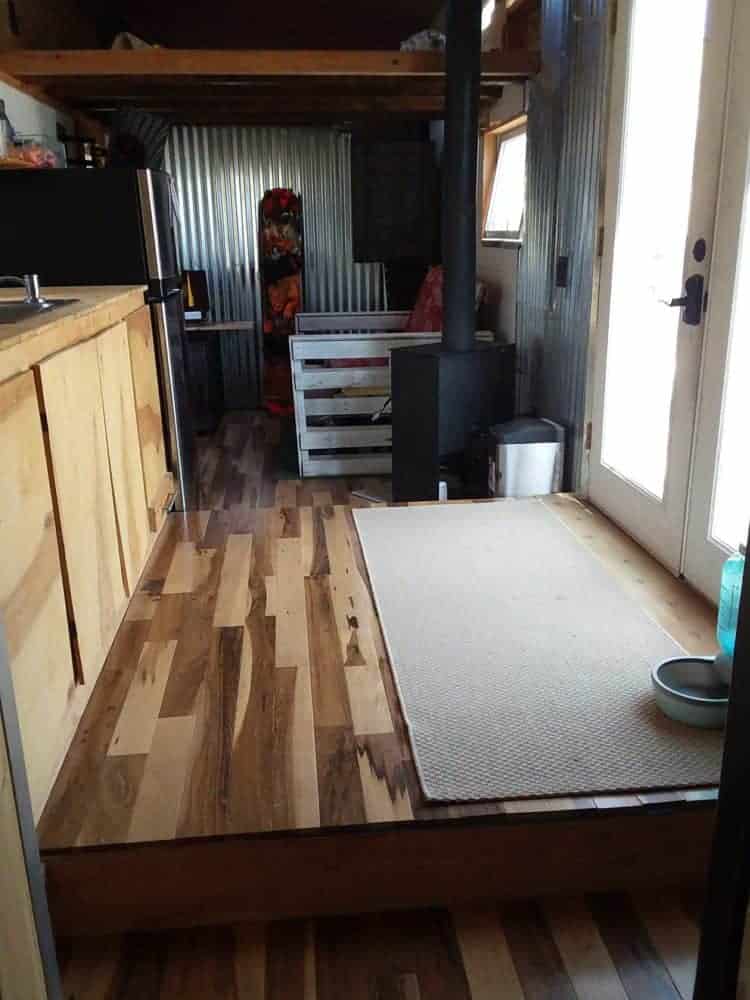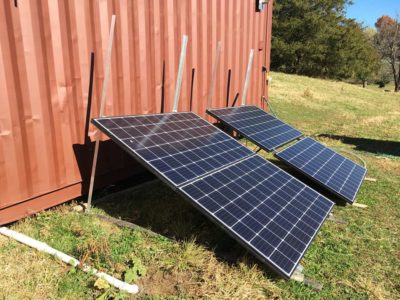
This article has been reviewed in accordance with our editorial policy.
Often we are questioned on tips for accommodating guests in a tiny house, so I wanted to put a list together for everyone. This can seem daunting with a small area! However, my husband and I have been living tiny for almost 4 years now and we want to help others understand it.
12 Tips for Accommodating Overnight Guests in a Tiny House:
- Have a Second Loft
- Have a Fold Out Couch
- Have a Fold Down Table
- Camp Outside
- Have Instructions for Composting Toilets
- Spend Time Outside
- Put Extra Coats and Shoes in Storage
- Check Your Toiletry Supplies
- Have Enough Towels
- Have Enough Blankets
- Clean Out Your Fridge
- Use Paper Plates
1. Have a Second Loft
Here is something to keep in mind when you are designing your tiny house: How often will you have guests over? Depending on the answer you may want to design a home with an additional sleeping space, or a second loft.
This loft can then be used as additional storage whenever no one is coming over. Who doesn’t need a little extra storage? Another idea, is that it can be used as a room for your pets.
Often times though you will find that people come over less often than you originally thought. We had people over every now and then before we went tiny, and much fewer after.
It did change. We have people over much less often now that we live in a tiny house, and go over to their houses instead. Plus we now have the ability to travel and move a lot. So definitely less people coming over.
You may now have the option to pull your house over to another person’s house, than sleeping situations will not be an issue.
2. Have a Fold Out Couch
If you are less likely to have people spending the night in your tiny home, but still want the option then having a fold out couch is a great idea! We had a futon in our first house, exactly for this reason.
3. Have a Fold Down Table
This is a less common idea, but you can also have your hand built table fold down into a bed, like in an RV. I have seen several tiny houses that have this. This also allows for additional storage under the seats.
4. Camp Outside
Camping is a great option that is often overlooked. Part of going tiny is the ability to enjoy more nature. If it’s nice whether you can have a camp out in your back yard.
If your guests are not fond of this idea, then you can camp out and let them stay in your bed. Either way spending more time outside is never a bad thing!
Camping can sometimes have a dirty feel associated with it. But remember you are only sleeping on a mat in a covered area. You still have a regular bathroom and kitchen just a few feet away.
My husband and I have camped a lot since we went tiny. We have lived in a tent for a couple months while he was building our second home. We still took showers, cooked, and everything else. It was very freeing.
5. Have Instructions for Composting Toilets
It is important to have instructions posted over your toilet, if it is not a regular flush toilet. This can be easily forgotten. Of course you can always explain it too.
But it may feel awkward to explain how your toilet works to someone who is not familiar with anything like it. Also, if they forget something the next day it may make for an awkward conversation.
It is best to just post some information over your toilet so anyone using it can read it, without having to ask any questions.
6. Spend Time Outside
Remember, going tiny let’s you enjoy more nature! Whenever people come over to our house, we set up some chair around a fire pit and all enjoy the outdoors.
This is especially helpful if you are feeling too cramped in your house with other people. It can always be a good idea to get out and spend time outdoors or go somewhere else, so you and your guests don’t feel suffocated.
7. Put Extra Coats and Shoes in Storage
This is another good trick that can often be overlooked. It is hard to find a good place for coats and shoes in a tiny house. You may have a few coats each hanging up, and extra shoes laying around.
Take some of these to your storage. Just keep what you will use, your guests will need a place for their coats and shoes as well! Plus this can often free up some space.
8. Check Your Toiletry Supplies
Often times we only have enough toilet paper for the week, until we go grocery shopping again. People in tiny houses don’t really over shop and buy extra items.
So this is important! Check for anything your guests may use that you do not have enough of now.
9. Have Enough Towels
My husband and I keep two towels out regularly, and maybe one or two in storage. Make sure you have enough towels for your guests to use too!
10. Have Enough Blankets
Same thing goes for blankets! If you do not have an extra bed, chances are you have not thought about having extra blankets. Check for this if you have overnight guests coming.
Also check for sheets, pillows, and pillow cases!
You can get decently nice blankets at dollar stores. Given that we have five dogs, we get new blankets about once a year, so we buy them cheap. But we still really like them!
11. Clean Out Your Fridge
Cleaning out your fridge should be something you are already doing regularly. However, if you will be cooking for other people it is a must!
We have a small fridge in our current house and I am even surprised sometimes at the amount of room I get when I throw out a few old things. This will be extremely helpful when you are buying food for more people.
12. Use Paper Plates
This is similar to checking for towels and blankets. My husband and I only keep the dishes we need in our tiny house now. If a couple of people come over we wouldn’t have enough plates and utensils.
It is a good idea to pick up some paper plates and utensils if you will not have enough dishes for everyone.
Related Questions
How do you cook for guests in a tiny house? If you are cooking for guests in a tiny house, it is always a great idea to have a cook out. Your house may be tiny, but you will have space outside. You can also cook some easy one pot meals or food you put together yourself, like tacos.
Can you let your guests sleep in your bed? Letting your guests sleep in your bed is entirely up to you and your guests. It is not uncommon for older parents to sleep in their children’s bed if there is not a better option for them. If you do not have an extra bed and your guests do not want to sleep on the couch, you can always offer them your bed.




